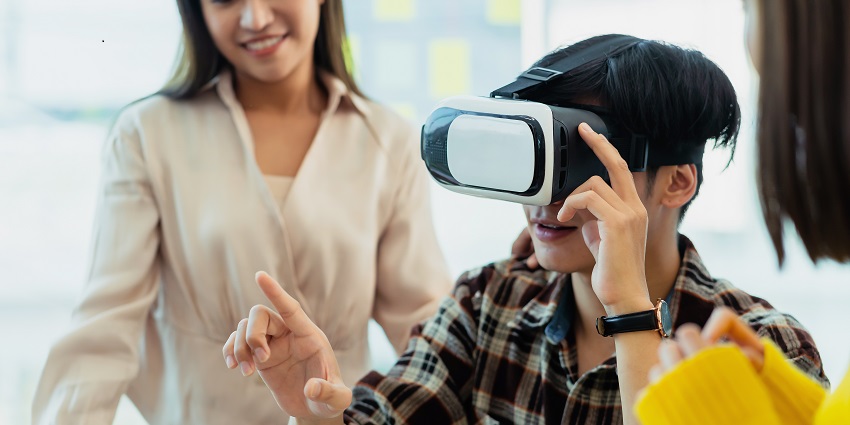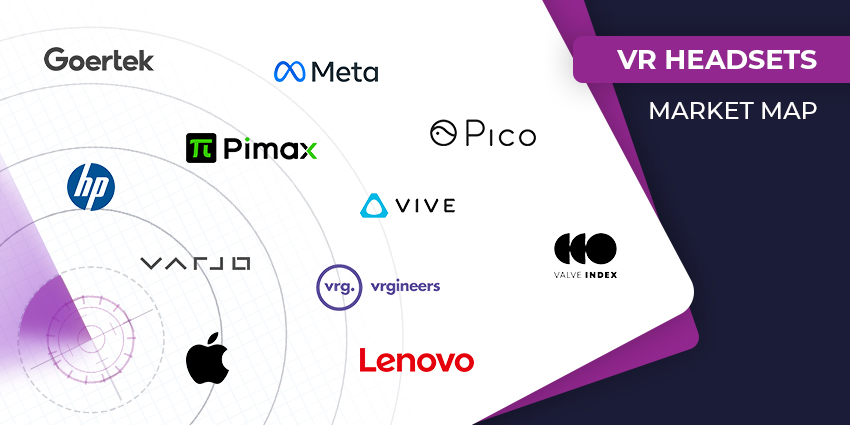XR is quickly making its way into more aspects of our lives than ever before. What started as a novel concept, largely embraced by entertainment and gaming companies, has become a mainstream sensation. We’re using extended reality for everything from collaboration and communication to customer service and product development.
Perhaps one of the most exciting avenues for the XR revolution, is the educational and training sector. Education has already been identified as a high adoption area for AR, VR, and MR technologies. As teachers and training teams look for new ways to engage and inspire their students, XR represents a new landscape for hands-on, immersive experiences.
With XR technologies, we can connect remote learners in a virtual environment designed to recreate a physical classroom, or allow them to traverse environments they couldn’t access in-person. Let’s take a closer look at the evolving state of XR in education and training.
The Potential for XR in Education
Before the pandemic hit, the educational sector was often seen as a relatively slow adopter of new technologies. Implementing new tools and innovations was an expensive and time-consuming endeavour for training facilities, universities, and schools. It was often easier for educators to preserve traditional teaching methods, than risk exploring new environments.
When COVID-19 struck, however, government grants and new investments in education allowed facilities to begin a rapid process of transformation. Schools could start experimenting with XR to connect with their students, and universities discovered the potential of VR for hands-on training.
Already, Penn State University has its own locomotive simulator, while San Diego University uses VR to teach students about astronomy. We’ve seen a meteoric rise in use cases for immersive education, with potential emerging in:
- Workplace training: XR solutions are ideal for workplace training environments, particularly at a time when people are suffering from fatigue after exposure to too many video meetings. With XR solutions, people can step into immersive environments, where they can learn both soft skills for customer service and communication, and technical abilities.
- Real-world simulations: With VR, companies and educational providers can create simulations of real world experiences that are safer and less expensive than training people in-person. For instance, employees in an engineering facility can learn how to deal with electrical devices without putting themselves at risk of electric shock.
- Improved knowledge retention: For practicing complex skills and developing new talents, repetitive training is often necessary, in a highly immersive environment. Studies show VR can be up to 10% more effective at generating successful knowledge recall than traditional educational methods.
- Remote education: In an environment where students can’t always be present in a physical classroom, XR provides a new way to access the educational space. Students can work and learn together in virtual environments as though they were there in person. Groups can even be taken on unique field trips around the world.
Trends Driving XR for Education and Training
The rapid innovation in the XR world, combined with increasing investment in training solutions has prompted exceptional growth for XR in education.
Already, police academies are using VR to train officers on dealing with difficult situations. Medical students are using tools like the Microsoft HoloLens system to learn about human anatomy without cadavers. Even business professionals are discovering new ways of interacting with customers through VR and Mixed Reality tools.
As demand for immersive educational experiences continues to grow, we’re seeing a few trends emerging in the space, such as:
- 5G Connectivity: Better connectivity will be crucial to the XR environment of the future, particularly when it comes to creating powerful immersive experiences. Better 5G connections should reduce the latency involved in sending holographic images of teachers to students wherever they are, or allowing students to learn in flexible VR environments.
- The Metaverse: The Metaverse isn’t just an ecosystem for communities and workplaces, it can also be a powerful environment for education and training tool. Universities and training facilities can recreate their campuses and environments in the metaverse, and bring communities of learners together from anywhere in the world.
- Merging AI and XR: As artificial intelligence makes its way into the XR landscape, new opportunities are opening up for educators. For instance, training teams can create custom learning experiences for companies, complete with AI virtual assistants to guide staff members through the educational process. This reduces the need for having a hands-on teacher available to monitor the VR experience.
- Hybrid learning: With AR and MR technologies, it will be possible to bring aspects of the digital landscape into the real world, for hybrid learning experiences. This could mean that future students could practice surgical techniques on a holographic version of a human body, rather than wasting cadavers. Or team members could learn how to use tools on-the-job, with instructions overlaid on their vision through AR glasses.
- Haptic feedback: As we search for ways to make learning more immersive, haptic feedback and other intelligent tools could become more popular. These tools allow users to actually feel the digital content they’re interacting with. This can help to create muscle memories which improves information recall. The more immersive the training experience, the more students are likely to keep with them after the lesson is over.
Exploring the Future of XR in Training and Education
Research is already beginning to demonstrate the benefits of using XR in education. One study found using VR for training students instead of traditional methods led to 27.4% higher average test scores. The same report also found immersed students were more able to grasp new ideas and concepts, and more likely to retain the information they gathered.
As the world of education continues to evolve post-pandemic, and concepts like remote and online learning grow more popular, demand for XR will only continue to grow. With countless opportunities for hands-on and memorable learning experiences, XR can change the way we share knowledge forever.







